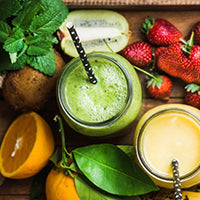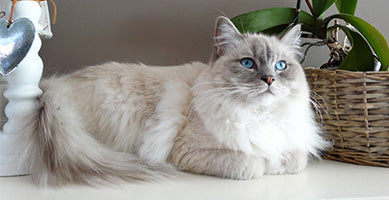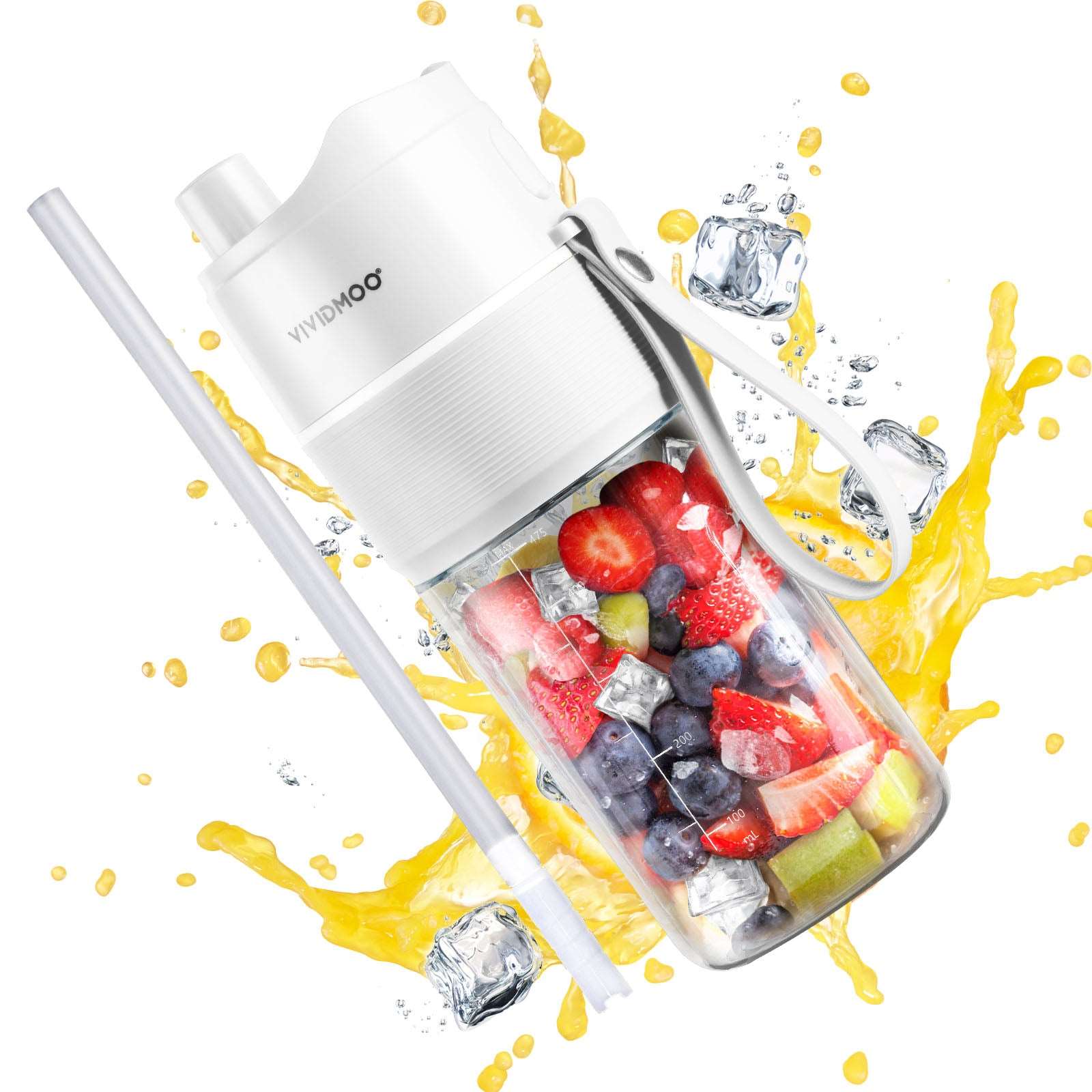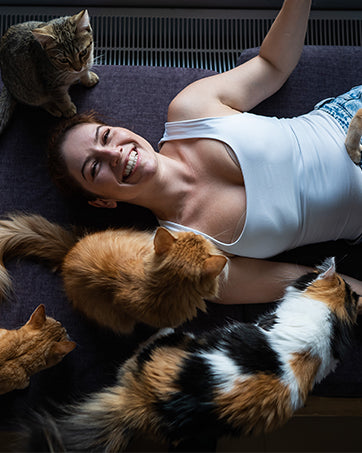Jessica W. Kelvin - Mar.05.2024
Why Do Cats Eat Grass?
7 Insights into Feline Behavior

Is Milk Harmful to Cats?
Est. read time: 4 min.
FFor generations, the image of a cat happily lapping up a bowl of milk has been etched into our collective consciousness, thanks in part to countless cartoons, movies, and storybooks. This idyllic scene suggests a natural affinity between cats and milk, leading many pet owners to believe that milk is a healthy treat for their feline friends. However, the reality of cats' dietary needs and their ability to process dairy products is far more complex than this traditional image implies. This blog aims to explore the effects of milk on cats, shedding light on whether it's a safe indulgence or a potential health risk.
Understanding Cats' Nutritional Needs
Cats are obligate carnivores, meaning their diet must primarily consist of meat. This is not just a preference but a biological necessity. The essential nutrients they require, such as taurine, arachidonic acid, and vitamin A, are found naturally in animal products. Unlike humans or dogs, cats lack the enzymes necessary to efficiently convert plant-based nutrients into the forms their bodies need.
The nutritional needs of cats also change with age. Kittens rely on their mother's milk for the first few weeks of life, which provides them with the perfect balance of nutrients, antibodies, and hydration. This milk is specially formulated to be digestible by their developing digestive systems. As they grow, cats gradually lose the ability to process lactose, a sugar found in milk. This shift is natural and prepares them for a diet less reliant on milk and more on solid foods.
In the next sections, we'll delve deeper into the issue of lactose intolerance in cats and the potential health risks associated with feeding them milk.
The Reality of Lactose Intolerance in Cats
Lactose intolerance in cats is a condition that affects many, but not all, felines. This intolerance arises because, after weaning, the activity of lactase—the enzyme responsible for breaking down lactose in the digestive system—declines significantly. Without sufficient lactase, lactose cannot be adequately digested, leading to various gastrointestinal symptoms.
For many cats, consuming milk can result in discomfort due to this intolerance. Symptoms can include diarrhea, vomiting, and abdominal pain. These issues are not only unpleasant for the cat but can also lead to dehydration and other health concerns if not addressed. It's important to note that the severity of lactose intolerance can vary among individuals. Some cats might handle small amounts of milk without significant issues, while others may experience symptoms even from a tiny quantity.

Potential Health Risks of Feeding Milk to Cats
Feeding milk to lactose-intolerant cats can pose several health risks. Beyond the immediate gastrointestinal discomfort, persistent exposure to lactose can lead to more severe complications, including:
Chronic digestive issues: Regular consumption of milk can cause long-term disturbances in a cat's digestive system, potentially leading to chronic conditions.
Dehydration: Diarrhea and vomiting, common symptoms of lactose intolerance, can quickly lead to dehydration, particularly in smaller or younger cats.
Nutritional imbalance: Relying on milk as a significant part of a cat's diet can lead to imbalances, as milk does not provide a complete nutritional profile for adult cats.
It's crucial for cat owners to recognize these risks and understand that the charming image of a cat enjoying a bowl of milk doesn't align with the biological and dietary realities facing their feline companions.
Cats:Theobromine Toxic Consumption
Most Cats: 1-10 lbs(0.45-4.6 kg), Large Cats11-25 lbs(5-11.4 kg)
Cacao Beans: Most Cats> 0.05 oz, Large Cats> 0.5 0z
Unsweetened Baking Chocolate: Most Cats> 0.2 oz, Large Cats>2 0z
Dark Chocolate: Most Cats> 0.5 0z, Large Cats>7 oz
Milk Chocolate: Most Cats>1.5 0z, Large Cats>16.5 0Z
White Chocolate: Most Cats>360 oz, Large Cats>4000 0z
Cocoa Powder: Most Cats> 01 0z, Large Cats>10z
Cocoa Bean Mulch: Most Cats>0.1 0z, Large Cats>1 0z

Showing making procedure is a good way to guarantee product quality
Stress Relief
Eating grass can also serve as a form of stress relief for cats, providing a calming activity that distracts from anxiety or boredom.
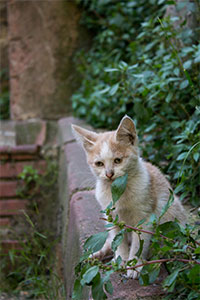
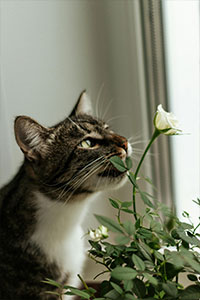
Get customer attention by clean visual and video
Instinctual Actions
Grass eating is an instinctual behavior that may stem from a cat's need to seek out alternative food sources or to induce vomiting to clear their stomachs of indigestible materials.
Safer Alternatives to Milk
Recognizing the potential issues with traditional cow's milk, pet owners may wonder about safer alternatives. Fortunately, there are several options available:
Lactose-free cat milk: Specifically formulated for cats, these products are free from lactose, reducing the risk of digestive distress.
Water: The best hydration for cats is plain water. Ensuring fresh, clean water is available at all times is vital for their health.
Wet food: High-quality wet cat food can provide hydration along with essential nutrients, serving as a good alternative to milk.
When considering any dietary supplement or treat, including lactose-free milk, moderation is key. These should not replace a balanced diet tailored to your cat's specific needs. Always consult with a veterinarian before introducing new foods into your cat's diet.
Article credit: Heidi Cohen (https://heidicohen.com/use-blog-to-sell/)
Digestive Aid
Grass acts as a natural laxative, helping cats pass hairballs or other indigestible items through their digestive tract more easily.
Elimination of Parasites
It's also theorized that grass eating may help cats eliminate intestinal parasites, although this benefit is more anecdotal than scientifically proven.
Conclusion and Best Practices
The enduring myth of milk being a beneficial treat for cats is one that needs reconsideration. While the idea is rooted in tradition and popular imagery, the reality is that many cats are lactose intolerant and can suffer from a range of health issues if fed milk. Instead, cat owners should focus on providing a balanced diet, suitable hydration through water, and safe, lactose-free alternatives if they wish to indulge their feline friends.
Remember, each cat is unique, and what works for one may not work for another. Consultation with a veterinarian can provide guidance tailored to your cat's specific dietary needs and health status, ensuring they remain happy, healthy, and well-nourished.
Recap of Key Points:
Cats are obligate carnivores with specific dietary needs, and their ability to process lactose diminishes as they move from kittenhood to adulthood.
Lactose intolerance is common among cats, leading to potential digestive discomfort and other health issues when they consume milk.
Safer alternatives, such as lactose-free cat milk and wet food, are available and should be used in moderation as part of a balanced diet.

Final Thoughts: Embracing Our Cats' Health with Knowledge and Care
As we draw this discussion to a close, it's clear that the well-being of our feline companions is a matter deeply intertwined with understanding and respecting their biological and nutritional requirements. The image of a cat contentedly sipping milk may be deeply ingrained in cultural folklore, yet our love and care for them must be guided by knowledge and an appreciation for their true nature.
In a world where the bond between pets and their owners has never been more cherished, taking the time to learn about what truly benefits our cats is a testament to the depth of our affection for them. By choosing suitable, safe dietary options and consulting with veterinary professionals, we can ensure that our feline friends lead long, healthy, and joyful lives.
Whether you're a long-time cat owner or new to the joys and responsibilities of feline companionship, remember that every choice we make on their behalf is an opportunity to express our love and commitment to their well-being. Let's embrace this journey with open hearts and minds, always striving to provide the best care for our beloved pets.
How to Safely Introduce Grass to Your Cat
Suitable Types of Grass
Certain types of grass are more beneficial and safer for cats, including wheatgrass, which is often sold as "cat grass."
Growing Your Own Cat
Grass
For the safety and health of your cat, consider growing your own cat grass at home. It's a simple and effective way to ensure they're getting a safe product.
Alternative Behaviors and Solutions
Dietary Supplements
If your cat shows an excessive interest in eating grass, it might indicate a dietary deficiency. Consult with a veterinarian about supplementing your cat's diet.
Behavioral Enrichment
Providing toys, climbing structures, and engaging activities can reduce your cat's inclination to eat grass by offering alternative forms of stimulation.
Why Do Cats Eat Grass?
Exploring the curiosity behind this behavior reveals a complex blend of nutritional, psychological, and instinctual factors. Understanding these can help cat owners provide better care and enrichment for their feline friends.
Owner Experiences and Advice
Personal Anecdotes
Many cat owners have observed their pets eating grass and have noted the benefits or concerns that came with it. Sharing these experiences can offer valuable insights for other pet owners.
Expert Recommendations
Veterinarians and animal behaviorists can provide professional advice on managing grass-eating behavior, ensuring it remains a safe and positive experience for your cat.
FAQs
Cats should not eat chocolate ice cream; not only is chocolate toxic to cats, but ice cream often contains toxic ingredient propylene glycol. Ingesting propylene glycol can lead to anemia in cats.
Say it at the end
Understanding why cats eat grass sheds light on their complex behaviors and the natural instincts that drive them. By providing safe, suitable grass and paying attention to the underlying reasons for this behavior, cat owners can ensure their feline companions lead happy, healthy lives.


